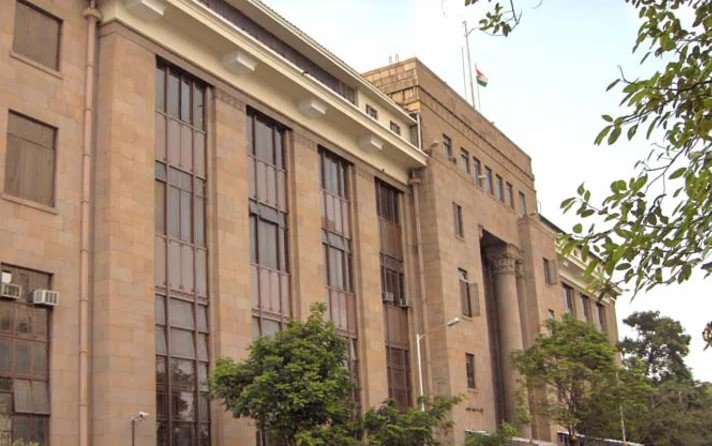India’s central bank looks set to cut interest rates again—but for millions of depositors and cautious savers, don’t expect any sudden bonanza. And for banks, well, the cost of funds might just stay stubbornly high a little longer.
Despite the anticipated move from the Reserve Bank of India (RBI), set to be announced at the close of its Monetary Policy Committee meeting today, the benefits might not spread evenly. Borrowers are likely to see their EMIs shrink. But for banks? It’s complicated. And for depositors? Even more so.
Banks are trimming home loan rates—but depositors left waiting
Earlier this year, RBI kicked off its rate-cutting cycle with a modest 25 basis point drop in the repo rate. That got the ball rolling for borrowers. Several banks slashed their home loan rates soon after, giving some relief to the middle class.
Data from the RBI shows the weighted average domestic term deposit rate (WADTDR) climbed to 6.91% in FY25—its highest in eight years. In February alone, it spiked to 7.02%, a level not seen in almost a decade. Clearly, rates on deposits haven’t followed the repo rate down.
Just a handful of banks—HDFC Bank, Bank of Baroda, Yes Bank—have dialed back deposit rates by around 15–40 basis points. And even those cuts haven’t sparked a broader change across the sector.
Why haven’t fixed deposit rates fallen?
Here’s where things get tricky.
Even if the RBI goes ahead with another 25 bps repo cut today, banks aren’t rushing to drop fixed deposit (FD) rates across the board. Why? Because they’re still grappling with tight liquidity, investor behavior shifts, and a need to maintain funding stability.

Depositors are getting choosy. As stock markets stay buoyant—even if a bit volatile—many retail investors are yanking money from low-yielding savings accounts and parking it in FDs or equities. This shift has made banks wary of losing liquidity, especially when they need to maintain a strong liquidity coverage ratio (LCR).
And there’s another factor: current account and savings account (CASA) deposits are under pressure too. Without enough CASA cushion, banks rely more on costly term deposits.
One-liner alert: FD rates may not fall, because banks just can’t afford to lose that cash.
How this plays out for banks, borrowers, and investors
Let’s break this down:
-
Repo rate cuts generally aim to boost economic growth by making borrowing cheaper.
-
Banks benefit when lower repo rates reduce their cost of borrowing from the RBI.
-
But unless deposit rates also fall, the overall cost of funds doesn’t drop significantly.
-
That’s why experts are warning that any drop in banks’ cost of funds will be delayed—and modest.
Here’s what Anil Gupta, senior VP at ICRA, had to say: “We think that the rate cut will be higher for wholesale deposits. So if we assume a 75 bps reduction in the repo rate in this cycle, we estimate banks’ funding costs may only come down by 30–35 bps.”
Who wins, who waits? A mixed bag across the system
For now, it looks like home loan borrowers are sitting pretty. With lending rates easing, EMIs could fall slightly, especially for floating-rate borrowers. That’s a welcome break in today’s inflation-fatigued household budgets.
But depositors, especially those relying on fixed income? Not so lucky. Many senior citizens, for instance, continue to depend on FDs for their monthly income. Any downward pressure on FD rates could erode their returns unless special senior deposit schemes stay untouched.
And what about equity investors? Their eyes are glued to market sentiment. A rate cut usually adds fuel to market optimism—but if banks don’t follow through with easier credit or cheaper capital, that mood can shift quickly.
There’s also some pressure building on the RBI itself.
What the RBI wants—and what the market expects
Governor Sanjay Malhotra and the MPC are trying to walk a tightrope. With inflation showing signs of cooling and growth wobbling a bit, the central bank wants to give the economy a push without rocking the financial system too hard.
But the real challenge isn’t cutting rates. It’s making sure those cuts actually reach the people and sectors that need them.
That’s where the term “transmission” keeps popping up in policy circles. Transmission of rate cuts into lending and deposit behavior has often been sluggish in India. And it’s no different this time.
Let’s look at some indicative numbers:
| Rate Type | Current Avg Rate (%) | Movement Since Feb 2025 |
|---|---|---|
| RBI Repo Rate | 6.25 | ↓ 25 bps |
| WADTDR (Term Deposits) | 6.91 | ↑ 10 bps |
| WADTDR (Feb 2025) | 7.02 | ↑ 21 bps |
| Lending to Corporates (Avg) | 9.10 | ↓ 15 bps |
| Lending to Home Loans (Avg) | 8.35 | ↓ 20 bps |
So, repo down. Lending down. But deposits? Still holding strong.
The long road ahead for deposit rate transmission
Gupta from ICRA said it best: “The present market volatility—whether it will result in a behavioural change among retail investors—is something that will have to be seen over a longer period and not immediately.”
Banks don’t want to cut deposit rates and risk losing capital. Retail investors are looking for the best yields. And the RBI? It’s trying to make monetary policy effective in a system full of friction.
In short, we’re in for a slow trickle, not a flood. And as always, the devil’s in the delay.
